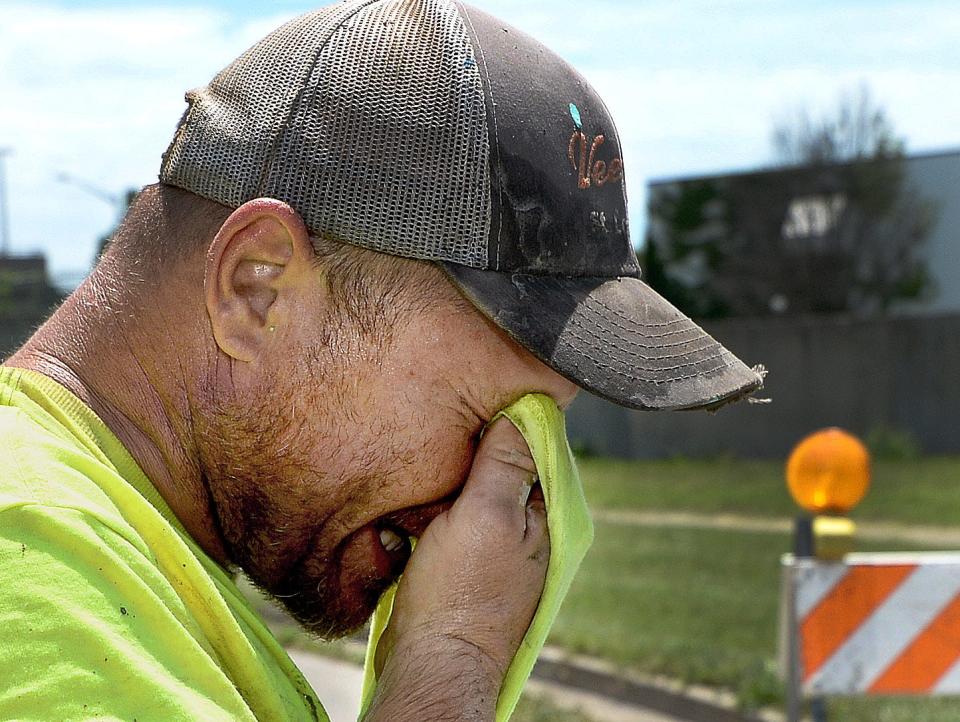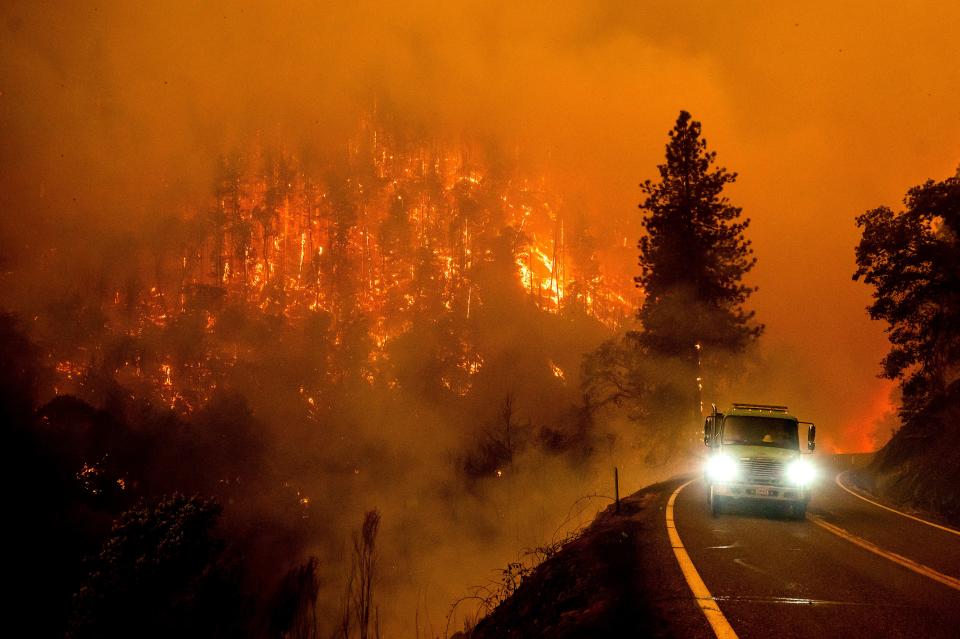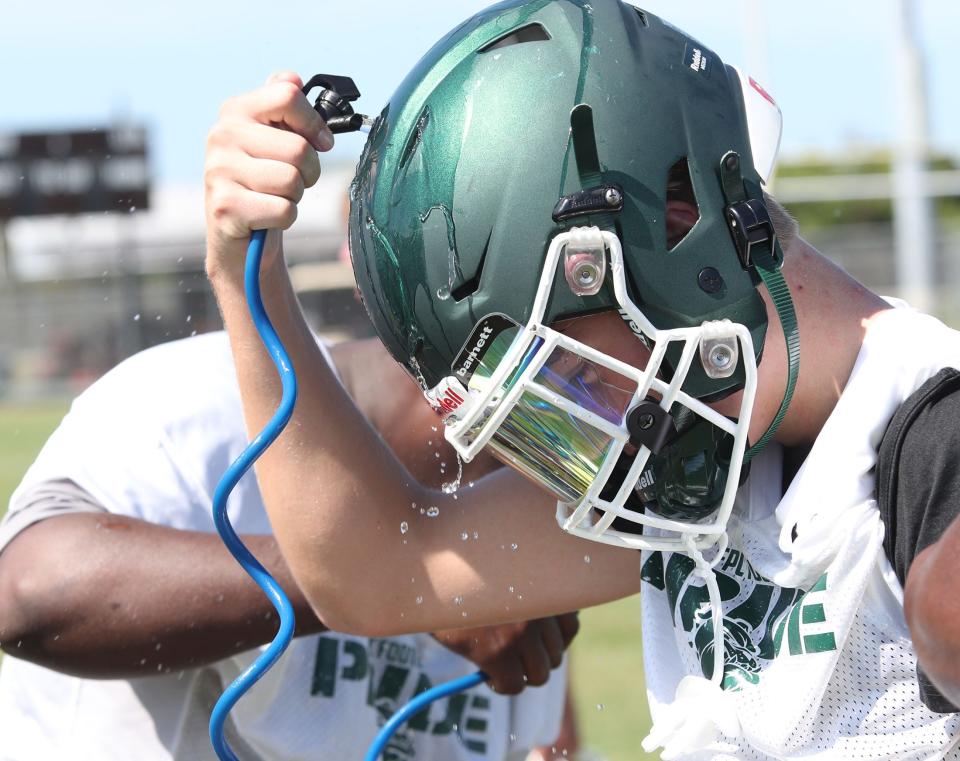Extreme heat waves may be our new normal, thanks to climate change. Is the globe prepared?
Think the intense heat baking the nation and much of the world this summer seems like an apocalyptic blockbuster? Just wait for the sequel.
Already occurring more often, heat waves are forecast to increase in potency and duration because of climate change, say scientists – who fear the globe is ill-prepared to handle the punishing toll.
“I can't imagine what these heat waves will be like in the future,” University of Georgia meteorologist Marshall Shepherd told USA TODAY.
Temperatures in the U.S. could rise 3-12 degrees by the end of the century, according to the National Oceanic and Atmospheric Administration. With every increase, scientists say, extreme temperatures and heat waves will have a brutal effect on daily life, human health, the workforce and transportation.
HEAT'S DEATH TOLL: Pacific Northwest heat wave suspected as cause of 14 deaths in Oregon, officials say
"We’re absolutely not prepared. How could anyone prepare?” said Catherine McKenna, former minister of environment and climate change in Canada and chair of a new United Nations climate task force. “Our infrastructure is just not designed for extreme heat, and the temperatures are just going up.”
There is “literally no question” that heat waves are becoming more intense and more frequent in the U.S. and around the world because of climate change, Penn State University meteorologist Michael Mann said.
“Sure, heat waves happen naturally,” he said. “But we would not be seeing this record heat wave, or the unprecedented ‘heat dome’ last summer, if not for human-caused warming from fossil fuel burning.”
CLIMATE CHANGE AND UK HEAT: Climate change made record-breaking UK heat wave at least 10 times more likely, study says

How hot is it?
On July 19, the temperature in London hit an all-time record high of 104.5 degrees, overheating rail lines and melting a runway at Luton Airport outside London.
More than 9,000 temperature records were broken around the world in July, nearly 6,000 of those in the U.S., according to the National Climate Data Center.
Texas accounts for hundreds of those. It was the hottest July on record in Houston, Dallas and Galveston. Abilene set a daily high record of 110 degrees for three days in a row in late July, just one degree short of its all-time record high. State climatologist John Nielsen-Gammon said it could wind up being the state's warmest summer on record.
Given climate warming projections, this summer is “likely to be one of the coolest summers of the rest of our lives,” Commerce Secretary Gina Raimondo said last week.
Remember the Dust Bowl? It's hotter than that
We have even surpassed the heat that helped create the historic Dust Bowl, said Gerald Meehl, a senior scientist at the National Center for Atmospheric Research. The Dust Bowl occurred across the central and Southern plains in the 1930s, a combination of extreme heat, drought and farming practices that helped create massive dust storms.
Meehl and colleagues compared heat records set then to records today. In any given decade, chances of a record high or record low should be equal, he said, but in the 1930s, the odds leaned heavily toward heat records, 1.7 to 1. That ratio remained highest throughout the 20th century, and many heat records set that decade have only recently been broken.
But the odds of breaking warm temperature records started climbing in the 2000s, increasing every decade, Meehl said. Since 2020, the chances of breaking a warm-temperature record versus a cool-temperature record are 2.4 to 1.
COOLING TIPS: 12 ways you can beat the heat this summer
People will sometimes cite the 1930s to say there’s no climate change, but the evidence shows it’s even hotter now, he said. And even the Dust Bowl can be partly blamed on human influence.
Thousands of acres grassland were plowed for farmland. Then the plants died during the drought, he said, which allowed exposed drought-baked soil to rise into dust storms.
How will heat waves increase?
Every little bit of warming will increase the frequency and intensity of heat waves and heat extremes, and droughts also are expected to increase, said Megan Kirchmeier-Young, a research scientist at Environment and Climate Change Canada.
The heat waves and droughts will amplify each other, Kirchmeier-Young said, growing stronger and increasing the risk of wildfires.
WHAT IS THE HEAT INDEX? Heat index, explained: Will temperatures continue to rise?
Heat waves that used to happen every 10 years already happen three times more often, said Claudia Tebaldi, an earth scientist at the Department of Energy’s Pacific Northwest National Laboratory in Washington. If the global average temperature rises to 2.7 degrees above pre-industrial temperatures – forecast to happen over the next 10 to 15 years – those heat waves could occur four times more often.
More concerning: increases in the most intense heat waves over that time period. She said heat waves that once occurred every 50 years are five times more frequent now and will become "almost nine times more frequent.”

How can the world prepare?
Even though most heat-related deaths are preventable, too many people already suffer and die in the heat, said Kristie Ebi, professor at the University of Washington’s Center for Health and the Global Environment. “Urgent and immediate investments are needed."
From 2008 to 2017 in the U.S., an average of 1,400 to 2,000 deaths each year in the U.S. were associated with extreme heat, a group of University of Pennsylvania physicians led by cardiologist Sameed Khatana concluded.
Worldwide, such deaths nearly doubled over the past 20 years among people over 65, according to the World Health Organization.
Heat also exacerbates existing inequalities and puts society's most vulnerable at risk, including the elderly, children and people who work outdoors, McKenna said.
Cities are even more prone to extreme heat because of the “urban heat island” effect, Mann said. “Yesterday in Philadelphia, the heat index might have been as high as 110 degrees F. That’s downright dangerous. And unfortunately, cities are typically home to low-income communities and people who don’t have access to the luxuries of air conditioning and other mitigating options.”
URBAN HEAT THREAT: We created scorching 'heat islands' in East Coast cities. Now they're becoming unlivable
Being prepared for the future requires new building materials, more efficient cooling and lifesaving warning and response systems, Ebi said.
Extreme heat is not only deadly but incredibly expensive, Raimondo said when announcing the administration’s new website for extreme heat awareness, Heat.gov. Her agency estimates the nation loses an estimated $100 billion a year when outdoor workers can’t do their jobs because it’s too hot.

Infrastructure is at risk
The risks and potential consequences of extreme heat events in areas where they are rare have been "severely underestimated," UCLA climate scientist Daniel Swain said. Now climate change is "increasing the stakes."
Extreme heat puts stress on aviation, bridges, railways, roads, schools and energy systems, said Kim Roddis, a professor in civil and environmental engineering at George Washington University.
Steel, concrete and other solids expand in higher temperatures, causing roads to heave and buckle and rail lines to become misaligned. Trains must run at slower speeds to help protect the tracks.
Aging infrastructure compounds the problem, Roddis said. More than 90% of the nation’s bridges and highways were built before the latest warming trend. At the same time, they're reaching the end of their design lifespans and little maintenance has been done, she said. “It’s like watching people run the family car with no oil."
HOW TO TACKLE CLIMATE CHANGE: Here's the thing about that dire climate report: We have the tools we need to fix things
Meanwhile, the question of just how much the Earth will warm remains unanswered, McKenna said. “That’s literally determined by us. The world is committed to staying below 2 degrees (Celsius) and striving for 1.5, but we’re not on track for that.”
At a climate conference in Berlin in July, U.N. Secretary-General António Guterres challenged world leaders to “treat adaptation with the urgency it needs.”
“This has to be the decade of decisive climate action,” he said. “We have a choice. Collective action or collective suicide. It is in our hands."
Dinah Voyles Pulver and Doyle Rice cover climate and weather issues for USA TODAY. Reach Dinah at dpulver@gannett.com and Doyle at drice@usatoday.com.
This article originally appeared on USA TODAY: Extreme heat waves may be here to stay. Is the globe prepared?

